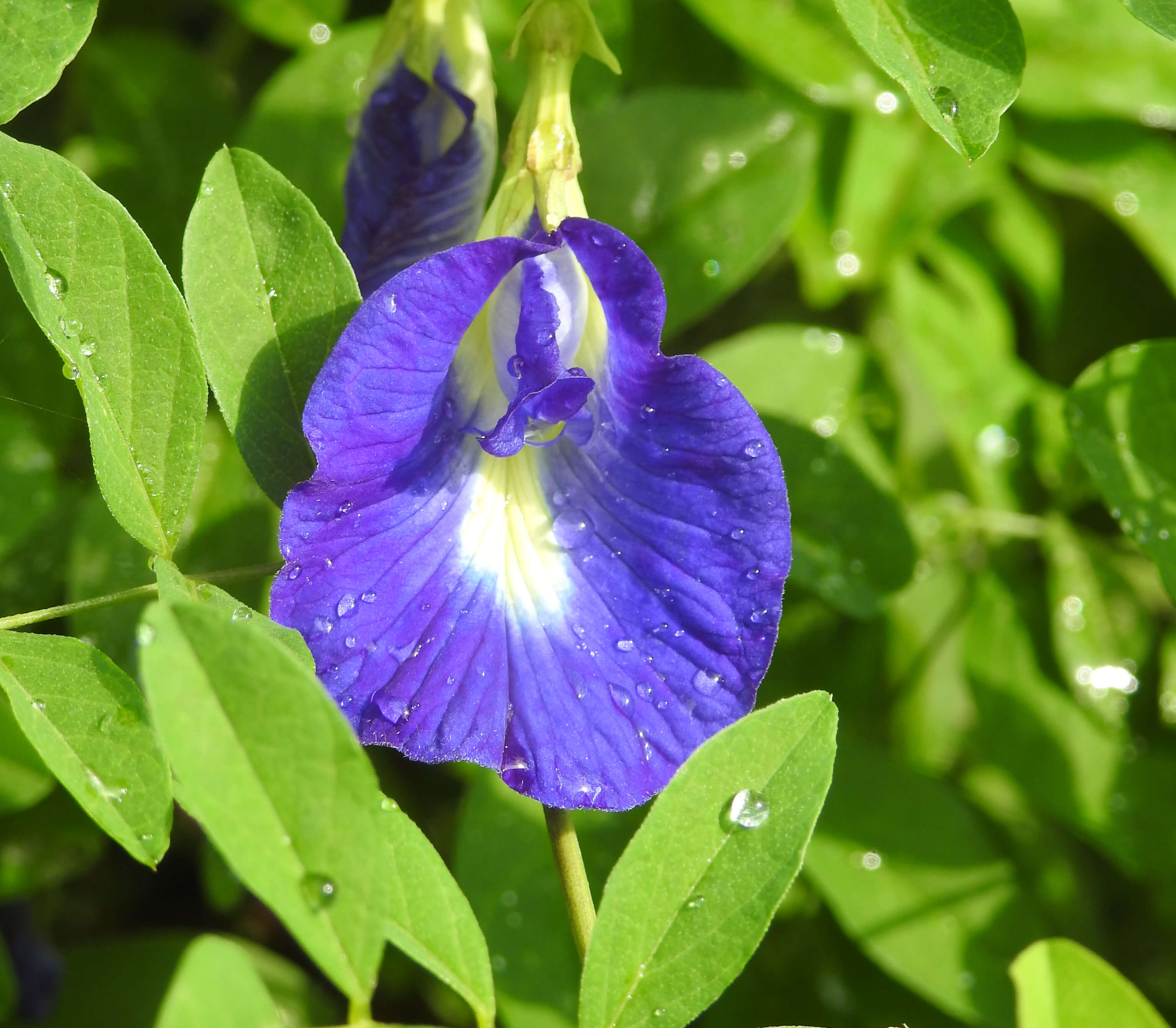Clitoria ternatea, commonly known as Butterfly Pea or Aparajita, is a perennial flowering plant with a rich history in traditional medicine, particularly in Ayurveda. It is native to Southeast Asia but is now found in tropical and subtropical regions worldwide. The plant’s striking blue flowers have garnered attention not only for their aesthetic appeal but also for their potential health benefits.
Habitat and Distribution
Clitoria ternatea thrives in tropical and subtropical regions. It prefers well-drained soil and is often found near riverbanks and in open, sunny areas. Its native range includes Southeast Asia, but it has become naturalized in parts of Africa, the Americas, and the Pacific.
Ayurvedic Properties
- Rasa (Taste) – Katu (Pungent), Tikta (Bitter), Kashaya (Astringent)
- Guna (Physical property) – Laghu (Light), Rooksha (Dry)
- Veerya (Potency) – Sheeta (Cold potency)
- Vipaka (Post digestion effect) – Katu (Pungent)
- Effect on tridosha – Pacifies all the three doshas
- Prabhava (Special effect) – Medhya (Nervine tonic)
Uses of Aprajita
In Ayurveda, Clitoria ternatea is classified as a “Medhya Rasayana” or a rejuvenating herb for the mind. It is associated with several Ayurvedic properties as follows:-
- Mental Health: Aparajita is traditionally used to enhance cognitive functions, memory, and mental clarity. It is recommended for individuals dealing with stress, anxiety, and depression.
- Anti-Inflammatory: Ayurvedic texts describe Aparajita as having anti-inflammatory properties, which can be beneficial for various inflammatory conditions.
- Adaptogenic: It is considered an adaptogen, helping the body cope with stress and maintain balance.
- Aphrodisiac: In some Ayurvedic texts, Clitoria ternatea is mentioned as an aphrodisiac, improving sexual vitality.
- Skin Health: The plant is also used for skincare, with its extracts believed to promote healthy skin and reduce signs of aging.
Medicinal Properties and Modern Research
Modern research on Clitoria ternatea is shedding light on its potential health benefits:
- Cognitive Enhancement: Compounds in the plant have shown cognitive-enhancing effects by increasing acetylcholine levels in the brain.
- Antioxidant Activity: The presence of anthocyanins and flavonoids in Butterfly Pea flowers provides antioxidant protection, reducing oxidative stress.
- Anti-Inflammatory Effects: Studies have demonstrated anti-inflammatory properties, which can be beneficial for chronic inflammatory conditions.
- Eye Health: The plant is explored for its potential to promote eye health, thanks to its antioxidant-rich composition.
- Food Coloring: Butterfly Pea flowers are used as a natural food coloring agent, imparting a vibrant blue or purple hue to various dishes and beverages.
Traditional Uses and Preparation
In traditional medicine, various parts of Clitoria ternatea are used for different purposes:
- Roots: The roots are often used in Ayurvedic preparations for their calming and adaptogenic properties. They are typically boiled or brewed as a decoction.
- Flowers: The vivid blue flowers are used to make teas, tinctures, or infusions, and they are valued for their cognitive and eye health benefits.
- Leaves: Some traditional remedies use the leaves for their anti-inflammatory properties, and they are often incorporated into herbal preparations.
Varieties of Aprajita
As per Bhavprakash nighantu:-
- Shwetapushpa Aprajita
- Nilapushpa Aprajita
Safety and Precautions
While Clitoria ternatea has a history of traditional use, it’s essential to exercise caution:
- Always consult with a healthcare professional or Ayurvedic practitioner before incorporating herbal remedies into your healthcare regimen.
- Be aware of potential interactions with medications or pre-existing medical conditions.
Parts Used
Dosage
- Root bark Powder: 1-3 gms
- Seeds Powder: 1-2 gms
Medicinal Products Containing Arka
- Arka Lavan
- Arka Taila
- Arkeshwar Rasa
Conclusion
Clitoria ternatea, or Butterfly Pea, is a plant with a rich heritage in traditional medicine and is gaining recognition for its potential health benefits in modern research. From its Ayurvedic properties, its clear stunning flowers and numerous medicinal uses, this plant exemplifies the synergy between traditional wisdom and scientific exploration. As research continues, Clitoria ternatea may find its place as a valuable natural remedy for a range of health concerns, but always consult with experts before use.



